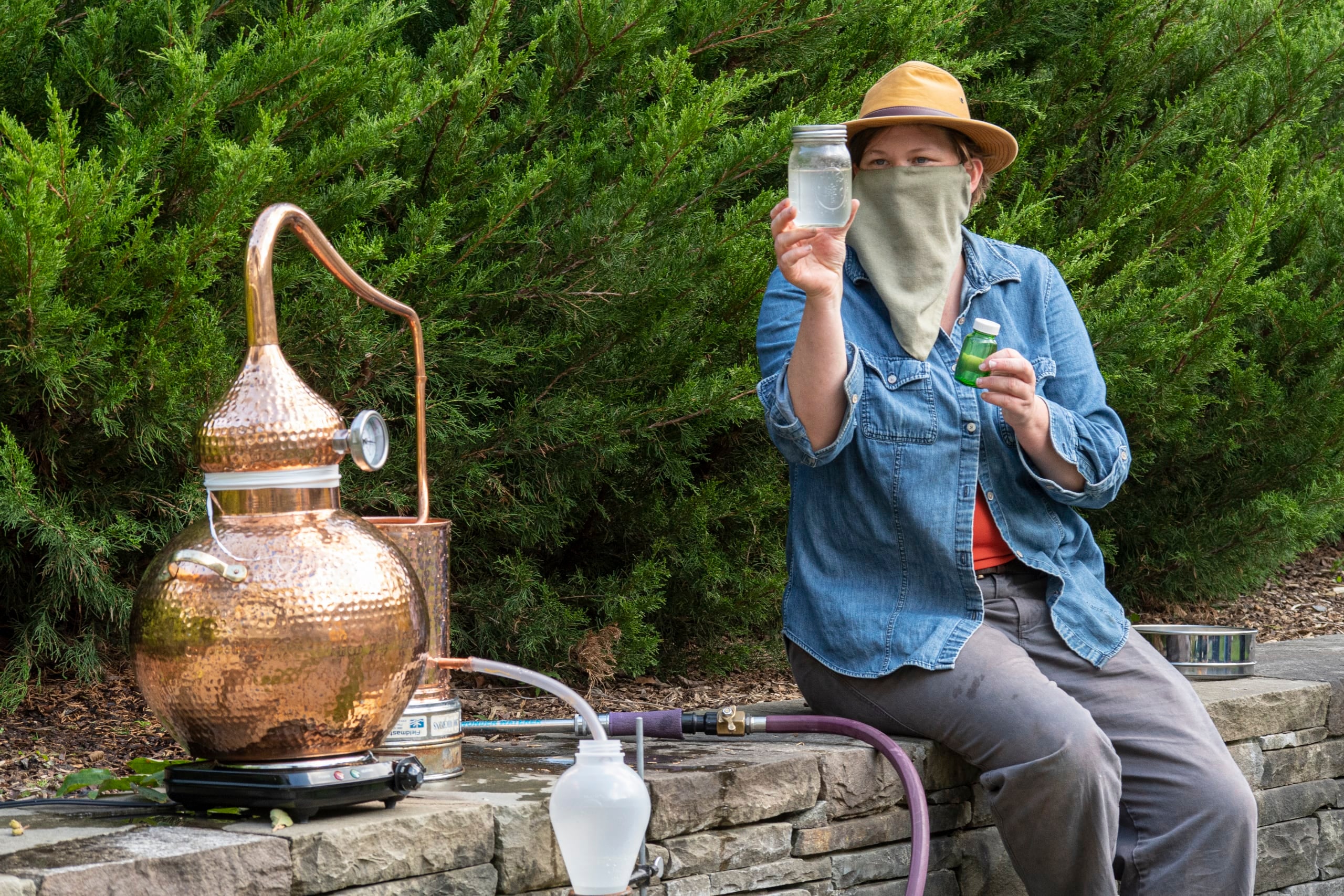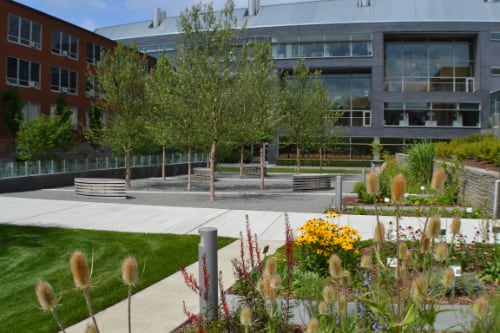
Garden coordinator Elizabeth Leibovitz demonstrates distilling witch hazel at the Heber W. Youngkin, Jr. Medicinal Garden
At the semester’s first meeting of the Pharmacognosy Club, a natural products research club, students made witch hazel hydrosol, a solution of water and witch hazel.
Club members gathered witch hazel from trees in the College of Pharmacy’s Heber W. Youngken Jr. Medicinal Garden, overseen by Elizabeth Leibovitz, garden coordinator.
“The gallotannins and other constituents of witch hazel have been distilled for hundreds of years,” says Leibovitz. “They were an important antiseptic during the Civil War.”
A copper alembic still is used to heat witch hazel (Hamamelis virginiana) and distilled water to near-boiling. “As the steam rises up the swan neck, the piping reaches the cold water in the condenser and liquifies, yielding a solution of water and volatile oils,” Leibovitz says. “The modern separation flask could be used to separate out essential oils.”
This exercise is meant to demonstrate how to gather plants safely and to instill in students an appreciation of the history of separation science as well as show the connection of modern chemical techniques to the traditional practices of artisans, perfumers, and healers.
Courses in medicinal plants and techniques in medicinal chemistry always have a medicinal garden component, and College of Pharmacy classes held there are popular with students. Also, first-year pharmacy students enjoy scavenger hunts in the garden as part of URI 101, a half-year course that acclimates students to URI.

